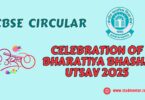In this article we providing information regarding latest Question Answer of SHVR (Swachh Evam Harit Vidyalaya Rating) 2025.
Question Answer of SHVR (Swachh Evam Harit Vidyalaya Rating) 2025
Q 1. What is the main source of drinking water, available in the school campus?
- c) Improved Source*: Hand pump/ Boreholes/ tube wells or packaged water (bottled / sachet)protected- well/spring/ rainwater catchment/ harvesting (collection), Delivered water(Tanker- trucks /Cart with small tank / drum).
Q2. Is adequate drinking water (at least 1.5 litre per child per day in non-residential & 5 litre per child per day in residential school) available from this water supply, all days throughout the year?
- Yes
Q3. How is drinking water stored and handled by most of the students?
- Storage tank with water taps
Q4. Is the drinking water treated regularly (safe drinking water availability) to make it safe for consumption?
- Filtration/Solar disinfection
Q5. Is the quality of drinking water tested from the authorized lab (please upload the copy for the latest test report)?
- Tested twice or more in a year
Q6. How many functional drinking water points are there in the school?
- 4
Q7. What is the main source of water for use in toilets?
- Running water with taps inside each toilet unit
Q8. What is the main source of water used for hand washing before PM POSHAN (earlier Mid-Day Meal)/lunch by students and cooks?
- Running water with taps at all the hand washing points
Q9. Is there a functional rainwater harvesting facility in the school?
- No
Q10. Does the school have separate toilets for boys and girls in working condition?
- The “all boys school”/ “all-girls school” has toilet units
Q11. How many toilet seats in working condition does the school have for boys and girls?
- Boys: 26, Girls: 38
Q12. How many urinals does the school have in working condition for boys and girls?
- Boys: 5, Girls: 28
Q13. Does the school have toilets accessible to the Children with Special Needs (CWSN) (an accessible toilet for CWSN, is one that if there is a functional toilet with ramp, handrail, and wide door for wheelchair entry inside toilet)?
- The school has at least one separate toilet for CWSN with ramp, handrail, and wide door for wheelchair entry and support structure inside toilet.
Q14. Are the toilet facilities suitable for children of various age groups available in the school?
- Yes
Q15. Does the school have separate toilets for teachers/staff?
- Yes
Q16. Do all the toilets in the school have secure door with latch?
- Yes
Q17. Do all the toilets in the school have cloth hanging hooks, at appropriate height?
- Yes
Q18. Do all the toilets have proper ventilation?
- Yes
Q19. Does the school have separate dustbins with lid and with specific colors for disposal of menstrual waste?
- Yes
Q20. Which of the following option is used by the school for safe treatment/ disposal of sanitary waste?(an incinerator in working condition maintaining adequate burning temperature, disposal mechanism for safe disposal deep burial of waste with adequate precautions)
- Disposed in an electric Incinerator
Q21. What is the main mechanism for disposal of toilet waste / faecal sludge?
- Septic tank/bio-toilets/ sewer line with sturdy and solid cover
Q22. Does the school have facility for hand-washing after use of toilet?
- Wash basin or hand washing point with water provision (other than running water) next to the toilet units
Q23. Does the school provide soaps for hand washing after use of toilets?
- Soaps are available at all the hand washing points all the time
Q24. Does the school have facility for hand-washing before PM POSHAN(earlier Mid-Day Meal)/lunch where a group of children can practice hand washing at the same time?
- Yes, with running water from taps
Q25. Does the school provide soaps for hand-washing before PM POSHAN (earlier Mid-Day Meal)/lunch?
- Soaps are available at all the hand-washing points at all the times
Q26. Do all children wash their hands with soap before PM POSHAN(earlier Mid-Day Meal)/Lunch?
- Yes
Q27. Is the height of hand-washing facilities suitable for children of various age groups in the school?
- Yes
Q28. Does the school provide sufficient dustbins in each classroom, kitchen area and at other common waste generating areas?
- Yes
Q29. Does the school segregate waste at source (bio-degradable waste and non- biodegradable waste)?
- Yes
Q30. Does the school compost its own biodegradable waste (wet waste)?
- Yes, on school premises
Q31. How does the school dispose its non-biodegradable waste (dry waste)?
- No specific measure / throw anywhere/ dumped at a place aside in campus/ nearby/ Burnt on school premises
Q32. Is the school premises clean (free from littering)?
- Yes
Q33. Are the school premises free of water logging?
- Yes
Q34. Are the school premises having nutrition garden/ kitchen garden/ herbal garden?
- Yes
Q35. Are the classrooms and teaching areas cleaned daily?
- Yes
Q36. What is the frequency of cleaning toilets?
- Daily
Q37. Are toilets cleaned with appropriate cleaning material?
- Cleaned daily with soaping agent and disinfectant
Q38. Who supervises the cleaning and maintenance of the toilets in the school?
- Team of teachers, staff and child cabinet members/student led committee
Q39. Does the school take care of the upkeeping/maintenance of fitting and fixture of toilets such as taps, flushing cistern, drainage pipes, overhead tank, wash basin etc. on a regular basis?
- Yes
Q40. Does the school management committee take active part in reviewing and addressing school WASH and operation and maintenance (functionally of the water, toilet, handwashing & general cleanliness) related issues regularly in their meetings?
- Yes
Q41. Does the school have at least 2 teachers trained in sanitation and hygiene education?
- Yes
Q42. Whether Child cabinet (Bal-Sansad)/ student-led body, group or club takes an active role in promoting sanitation and hygiene practices?
- Yes
Q43. Who supervises the practice of daily hand-washing with soap by students and cooks before PM POSHAN (earlier Mid-Day Meal)/ lunch?
- Dedicated team of teachers’/staff members and child cabinet members
Q44. Does the school take up hygiene and sanitation education including awareness on hand washing during morning assembly and in school club/ other regular student gatherings and functions?
- Yes – Weekly
Q45. Is menstrual health management regularly discussed with or taught to students of appropriate age (at least once in 3 months)?
- Yes, with both girls and boys
Q46. Does the school conduct cultural programs/competitions (essay, painting, debate etc) on hygiene and sanitation?
- Yes – Quarterly basis
Q47. Does the school display and use Water, Sanitation and Hygiene related posters and materials for promoting hygiene education?
- Yes
Q48. Does the school organize guest talks, expert talks, workshops, seminars, or sessions on water, sanitation, and hygiene?
- Yes – Quarterly basis
Q49. Whether school have any mechanism to monitor cleanliness (like cleanliness monitoring checklist), water, sanitation and hygiene (personal hygiene)?
- Yes
Q50. Whether school has an active and functional eco club/youth/green club or equivalent with its active role in environment conservation activities including generating awareness, sensitization on environment conservation and adoption of Mission LiFE climate actions?
- Yes, has a functional student led group as eco club with their active role in Mission LiFE related climate actions and environmental conservation activities
Q50.1. Whether school has evidence of Mission LiFE activities undertaken in the prescribed format in reference to the previous question (if answer is b/c/d, please upload photo in the photo section)
- Whether notification in token of constitution of Eco club for Mission LiFE uploaded on the Eco club for Mission LiFE portal and evidence of at least 2 Mission LiFE activities undertaken by the school
Q51. Whether school encourage the practice of the “5 R’s” (Refuse, Reduce, Reuse, Repurpose, Recycle) in schools with real-life examples in the context of paper, water, cutlery etc?
- Yes
Q52. Whether the school conducted water audit last year?
- Yes
Q53. Whether school has engaged students to study and learn traditions/practices related to protection of the environment?
- Yes
Q54. Whether schools have installed LED (Light Emitting Diode) lights across different areas?
- Yes
Q55. Whether school has installed functional solar panel to use renewable energy source?
- Yes
Q56. Has the school issued appropriate instructions for “Switching off appliances from plug points when not in use” and implemented key energy conservation practices?
- Yes
Q57. Does the school integrate safe environment, hygiene, and climate change education, learning, and skills into the teaching-learning process using age-appropriate methods, including sensitization, hands-on activities, projects, and experiential learning for all students and levels?
- Yes
Q58. Has the school organized at least one “Ek Ped Maa Ke Naam” plantation drive in last one year in school or neighbourhoods ?
- Yes
Q59. Has the school issued appropriate instructions and implemented measures to ensure the campus is free from single-use plastics?
- Yes
Q60. Does the school use water-efficient fixtures and mechanism, such as aerators in taps or low water-consuming flush systems to ensure water conservation?
- Yes
Thanks to Beloved Readers.


